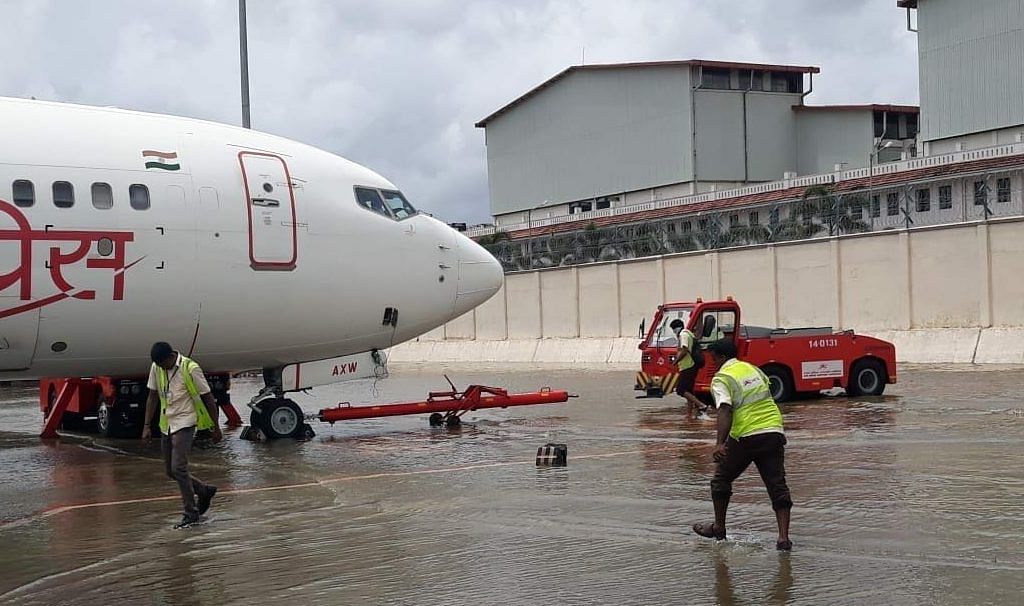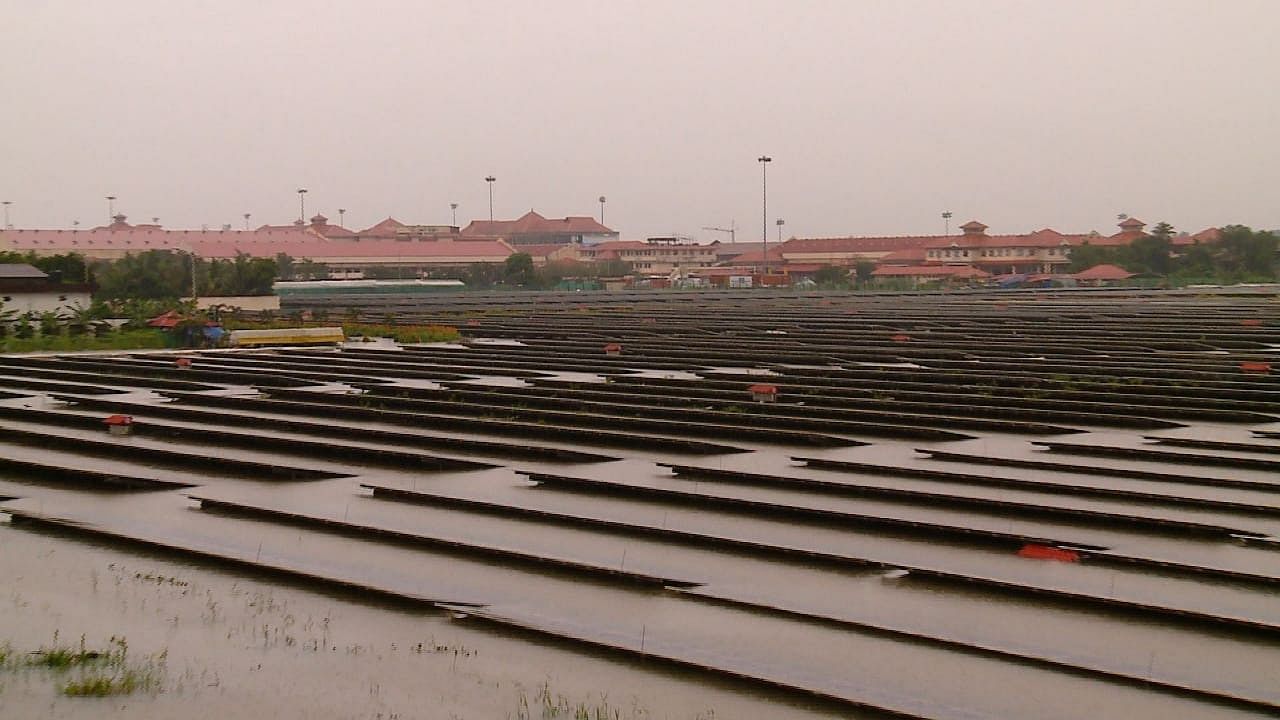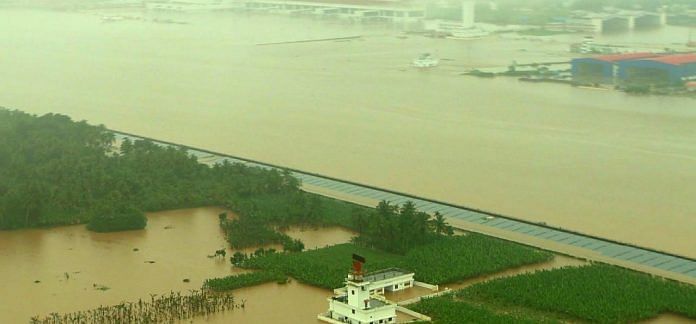The airport stands right next to the Periyar river, built on a paddy field with no drainage. The opening of dam gates upstream caused it to flood.
Kochi: The Cochin International Airport has two distinctions to its name. The creditable one is that it is the world’s first solar powered airport. The dubious one is that it is the first commercial airport to be shut down in recent times for at least 14 days due to flooding, because it doesn’t have a proper drainage system, built as it is in a paddy field.
Flood waters have affected the runway — close to 800 runway lights have been damaged due to the force of the flowing water. According to airport officials, the radar, navigation system, runway and passenger amenities as well as security equipment in the terminal building have been badly affected, while 2,600 metres of the periphery walls have also been severely damaged.
The airport is now scheduled to reopen on 29 August.
Why the airport got flooded
The airport stands a fair distance away from the centre of Kochi, close to the banks of the Periyar. The river swelled up when the shutters of the Idamalayar and Idukki dams upstream were opened, and the waters merged with the river, causing it to overflow and inundate the airport.
On its official website, Cochin International Airport Limited (CIAL) mentions that it shut down operations “due to heavy inflow of water consequent to opening of dams. This is done to minimise the inconvenience to passengers and as a precautionary measure to ensure operational safety”.
Speaking to ThePrint, CIAL director A.C.K. Nair said the authorities never anticipated a situation like this.
“When the Cochin airport was built, we calculated the local flood level situation and the maximum heavy rains in the area. The damage to the airport is because they opened the shutters of the dams all at once. In 1991, the dams were opened, but the water was released gradually. This was unprecedented,” he said.
“As of now the situation is that the airport is almost up and running, and we are in the last stages of getting all our equipment operational.”

Big changes needed
Bharat Bhushan, former Director-General of Civil Aviation, feels the decision taken by the airport management was correct, but says there is an urgent need to improve the drainage system at the airport.
“They have a problem there — once the Periyar floods, the water will run onto the tarmac. We saw it happen, we saw how the water had reached close to waist level. Under these circumstances, the equipment will be affected severely,” Bhushan told ThePrint.
“This is a commercial airport, and if they had things under control, the authorities would have reopened it within an hour. But the damage and the floods are unprecedented.”
Also read: Kerala floods: The science behind what went wrong, and what we have to learn
Nair agreed that there is a need to work on the drainage, but said the problem of being built in a paddy field bit couldn’t be helped.
“We are working with the state government on making a few changes for situations like these, but as for the paddy field, that is the only kind of land one could get in this part. There is no elevated terrain in Kochi and that was why it was built on a paddy field,” he said.
According to Bhushan, this situation has given CIAL a chance to ensure there’s a contingency system in place in case of floods. Airports in other countries have specialised drainage systems, and such technologies have to be considered in the future, he felt.

A significant airport
The airport, in the last financial year, crossed the 10-million passenger mark in a single year, up from 8.94 million passengers in 2016-17. It is important not just due to its proximity to important tourist destinations like Munnar and Idukki, but also as a direct connection to the large Keralite expatriate community in the Gulf.
Incidentally, just a week before the floods, the United Nations had selected CIAL for the Champion of Earth Prize 2018, for the use of solar energy in running the institution.
According to CIAL officials, a primary estimate of the loss incurred due to the floods is Rs 250 crore.
While the airport is shut, Kerala is being served by the airports in Thiruvananthapuram, Kozhikode, and the Kochi naval airbase on Willingdon Island in the middle of the city.







There are some similarities with the new airport coming up at Navi Mumbai1. Low lying wetlands, diversion of a river. Hopefully, the vulnerability to floods has been factored into the planning and provided for fully.